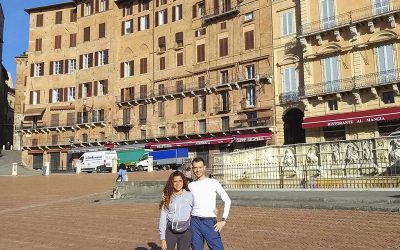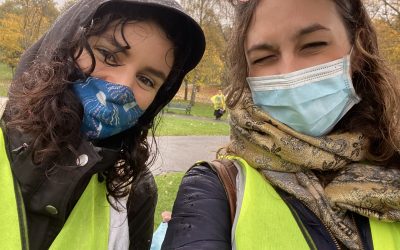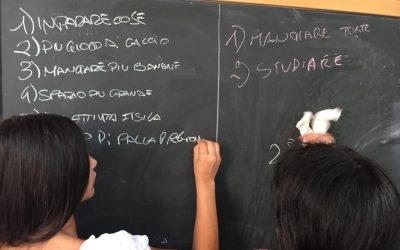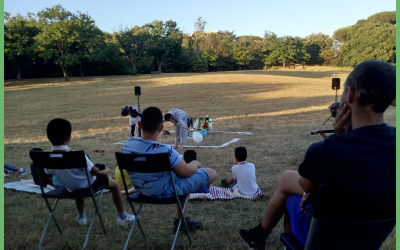Universal Design, Tourette’s and Reasonable Accommodations
May
May 20th was Global Accessibility Awareness Day (#GAAD). I have to admit I had never heard of this day, I only came across it because of tweets of some disabled people I follow on Twitter. Because of GAAD, I came across a free webinar on Eventbrite on social media accessibility, which was great, because a big part of my pledge is about making my social media content more accessible.
I participated in the webinar facilitated by Alexa Heinrich, a social media manager and trainer who focuses on digital accessibility. The workshop was mainly aimed at social media managers and content producers but it was useful for anyone who uses social media. The most interesting parts of the webinar for me were the demonstration of using a screen reader to read alt and listening to professionally created audio descriptions.
Alt-text are descriptions of images that are embedded in the image, which are read aloud to blind users on a screen reader. They allow blind and visually impaired people to participate in social media. They have to be manually added to images.
The alt-text demonstration was interesting because I’ve been writing alt-text for two months now as part of my pledge to make my social media more accessible, but have never heard what it sounds like to someone reading it with a screen reader. I also learned that text should use only the default font of the social media platform or website and that fancy unicode characters are not recognised by screen readers.
The audio description section was extra interesting for me as a filmmaker, because I have been thinking about creating audio descriptions for my future films. I asked Alexa how to create them, but sadly, she says creation of audio descriptions is a specialised field – the writing and especially the recording part. I will continue to look into how to create audio descriptions for my films but now I know that I would have to hire experienced professionals, so it’s something I would have to plan well and include in the film budget. For the audio description demonstration, we were shown a version of the Frozen trailer which has audio descriptions. It was interesting hearing how the descriptions are written, very similarly to alt-text, and seeing which things are emphasised in the descriptions. I would love the opportunity to learn to write screen descriptions!
I also learned about accessible versus universal design in May from blind Youtuber Molly Burke. Universal design means design that is suitable for use by the largest group of people possible – including people with various disabilities and in various types of tricky everyday situations. Molly is one of my favourite YouTubers! She has a very bubbly personality and I have learned so much from her about disability and accessibility.
Molly’s video is a review of some beauty products designed to be accessible to blind people. Most of the products had Braille on their packaging as their method of accessibility. Molly’s video taught me that Brailling packaging is not very useful because packaging is usually thrown away. For Brailling to be helpful, it needs to be on the product itself.
According to Molly, Braille on product packaging is an example of accessible design geared towards blind people who read Braille – a very small minority, whereas universal design is for everyone. Universal design is inclusive because it considers the needs of disabled people without segregating them by creating separate products for only disabled people.
June
I continued to write alt-text and/or image descriptions for my social media posts, and it is starting to get easier and feel more routine.
A TikTok came up on my Twitter timeline – a man who has Tourette’s was showing how he suppresses his tics or tries to make them blend into more socially acceptable gestures. It made me think about how judgemental society is of being disabled in public, that people who have Tourette’s feel the need to mask their tics at a detriment to them – because as the man in the video said, suppressing them results in a tic attack which is painful.
This then reminded me of Youtuber, Jack Francis, who also has Tourette’s. I had come across him years ago while watching the British reality TV show “The Undateables” – which is about the search for romantic partners of people with various disabilities.
it’s #TouretteSyndrome awareness month and i like this guy’s tiktoks. have learned a lot. pic.twitter.com/Ioar8lzCLH
— Lauren Chanel (@MichelleHux) May 22, 2021
The show was the first time I had come across Tourette’s syndrome. I then went to look for his Youtube channel and I watched a video where he explains his journey with Tourette’s. In the video, he tells the story of the challenges he faces with his tics when he travels by air, because he has tics that make him scream things like “bomb”. I was glad to learn that he has a routine which allows him to travel as smoothly as possible with the cooperation of the airline staff.
In June, I also faced my own challenges with academia around my mental health disability. As the semester was coming to a close, I had to make a short documentary film and write three essays within a few weeks. At the same time, I was going through a depressive episode and struggling to get my work done. I had to contact the course director to ask for deadline extensions, which was really nerve-racking for me because of past experiences with people assuming I’m just being lazy or exaggerating.
This course is also such a great opportunity for my career development and a once in a lifetime opportunity, that I was terrified of not passing and being dropped from the course if I could not manage to get all my work done. It was difficult to share this personal information but I knew it was my only option.
It was also difficult to watch my classmates finish their work and have time to go on outings while I was still stuck at home spending all day in front of the computer because my concentration was so poor that it was taking much longer than usual to get things done.
It is very common for students with mental illness to drop out due to the challenge of studying with a disability. Academic courses are not usually designed with disabled people in mind, and so courses tend to be too intense and fast paced for us to function at our best. It is frustrating because I know I am intelligent and capable but the environment is just not conducive for me to function to the best of my ability.
Thankfully, the course director was understanding and did not doubt me. Due to fear of not being believed, I had got a letter from my psychotherapist and attached it to my email to him, but he immediately responded saying he understood and I could have a deadline extension as I had already submitted evidence about my mental health and explained that I might need some “reasonable accommodation” at the beginning of the course. A “reasonable accommodation” is any change to a work environment that allows a disabled person who is qualified for the job to perform the essential functions of that job and enjoy equal employment opportunities.
The deadline extension allowed me to complete my work, and I passed, and therefore am able to progress to the next semester. I highly recommend that mentally ill people whose work is affected by their mental illness disclose their condition and ask for disability accommodations. Most countries in the world have laws that require educational institutions and workplaces to accommodate people with disabilities. It is something you have a right to, it is not a favour, so don’t feel bad about requesting them if you need them.
Goals for Next Month
I was not able to learn to add captions to Instagram videos because of how busy the last few months have been with my course, so I plan to do this in July.
Selasie












0 Comments